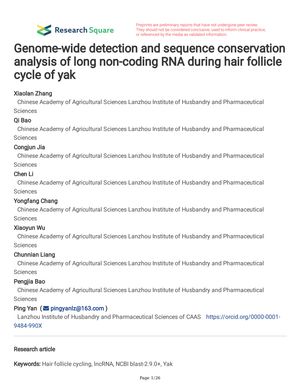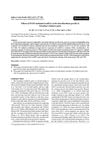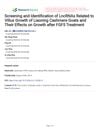Genome-Wide Detection and Sequence Conservation Analysis of Long Non-Coding RNA During Hair Follicle Cycle of Yak
September 2020
in “
Research Square (Research Square)
”

TLDR Researchers found that certain RNA sequences play a role in yak hair growth and these sequences are somewhat similar to those in cashmere goats.
In the study conducted three years ago, researchers identified 2,884 long non-coding RNAs (lncRNAs) across five phases of the hair follicle (HF) cycle in yaks. They performed differential expression analysis between three specific phases (January, March, and October), resulting in the identification of 198, 280, and 340 differentially expressed lncRNAs (DELs) in the respective comparisons. The potential target genes of these lncRNAs were analyzed using GO and KEGG enrichment analysis, which highlighted critical pathways involved in HF development, such as the Wnt signaling pathway, VEGF signaling pathway, and pathways regulating stem cell pluripotency. Additionally, by comparing the yak lncRNA data with previously published data from cashmere goats, 24 DELs with varying degrees of sequence conservation were identified. Three of these DELs were selected for a detailed analysis of their sequence conservation properties. The study concluded that the expression pattern and potential function of lncRNAs during the HF cycle of yaks could contribute to the understanding of lncRNA roles in HF cycles, and the sequence conservation findings between yaks and cashmere goats could offer valuable insights into lncRNA functionality and mechanisms.


